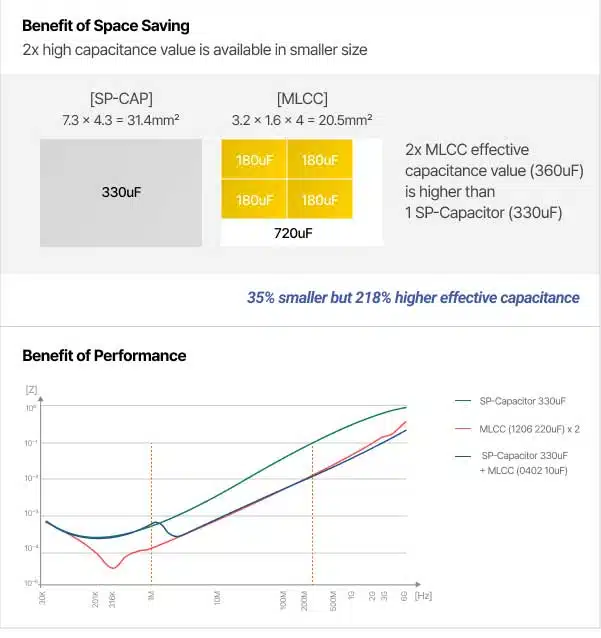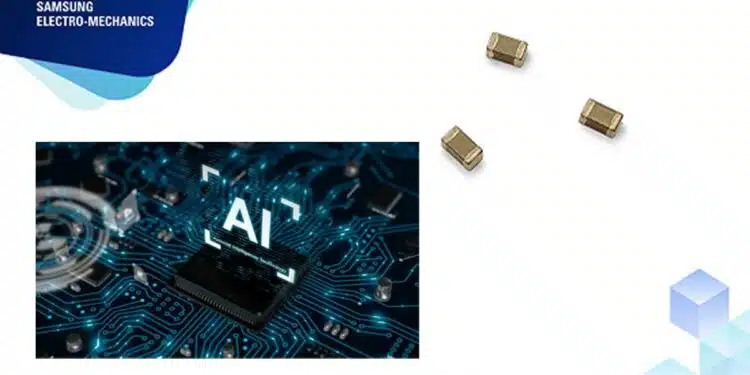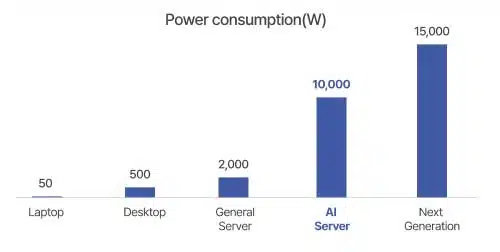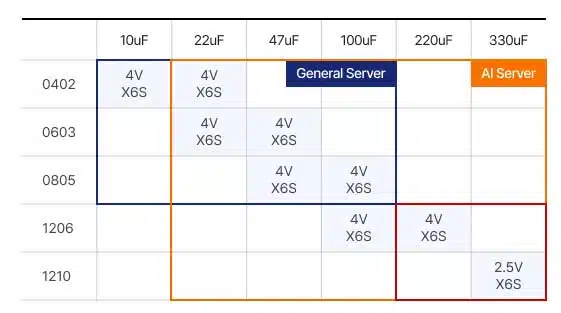Samsung Electro-Mechanics is mass-producing the 1206 inch, 220uF, X6S, 4V high-capacitance MLCC ceramic capacitors, which meet the high-capacitance needs required for AI servers with high-quality reliability and stable electrical performance.
Additionally, the 1210 inch, 330uF, X6S, 2.5V products are also being mass-produced, and samples are available upon request.
The power consumption of AI servers is five times higher than that of general servers, and AI servers employ 12.5 times more MLCCs than general servers. [Figure1, 2].
MLCCs used in AI servers require high capacitance, high voltage, and miniaturization to handle higher power, and these needs are continuously increasing.
AI servers use high-performance ICs such as CPUs, GPUs, and TPUs, and during high-computation operations, significant instantaneous current changes occur.
| General Server | AI Server | |
|---|---|---|
| MLCC Usage | 2,000 pcs | 25,000 (12.5x) |
| MLCC Capacitance | 20,000 uF | 200,000 (10x) |
High-capacitance MLCCs minimize voltage drops and quickly compensate for current fluctuations, improving power stability. MLCCs of general capacitance have an excellent high-frequency response. However, they lack the ability to store energy in low-frequency bands if they have lower capacitances. In contrast, high-capacitance MLCCs allow sufficient energy storage even in the low-frequency range, providing stable performance across a wider bandwidth.
Additionally, by using high-capacitance MLCCs in AI servers, the number of required components can be reduced, simplifying PCB design and increasing spatial efficiency for mounted areas.
For example, as shown in Figure3 below, applying four MLCCs (180uF x 4 @ 1Vdc) in place of one SP-CAP polymer aluminum capacitors (330uF) can reduce the required area by approximately 35% while improving capacitance by 218%. Furthermore, impedance characteristics are enhanced by 90% compared to SP-CAP.

Samsung Electro-Mechanics is currently mass-producing the 1206-inch, 220uF, X6S, 4V high-capacitance MLCCs. These capacitors meet the high-capacitance demands of AI servers, ensuring high-quality reliability and stable electrical performance. Furthermore, the 1210-inch, 330uF, X6S, 2.5V products are also being mass-produced and samples are available upon request.

































